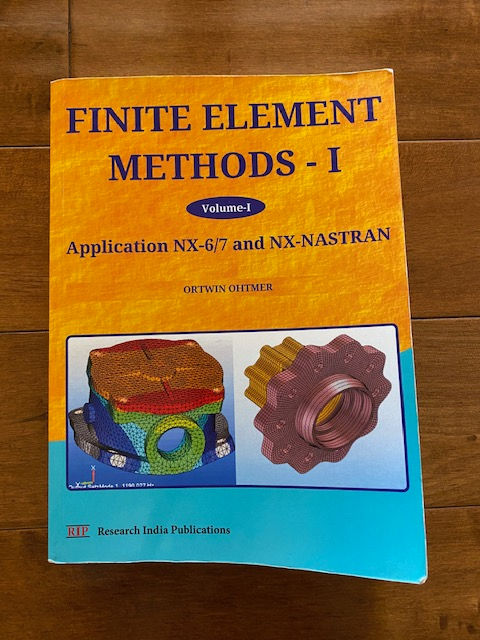FE Beam - Reference Text, Vol. II
- ortwinohtmer
- Dec 23, 2020
- 3 min read
Updated: Dec 24, 2020
Finite Element - Finite Volume Methods, And Direct Approximation of Differential Equations
Vol. II, Application NX-7/8 and NX-NASTRAN

For 1-D structures, trusses, beams and frames the Finite Element Method represents the simplest and most precise numerical solution method. For 2-D and 3-D structures (plates, shells, and solids) the Finite Element Method converges with the refinement of the mesh against the unknown exact solution. Therefore, it makes sense to introduce the Finite Element Method for 1-D frame structures. In three years my son Martin developed the software „FEBEAM‟ and ‟SPRI-MOVE‟, which are now part of the documentation for MAE 409A, Finite Element Methods I. Since my son has graduated and received his diploma from the Mechanical and Aerospace Engineering department at CSULB he has been attempting to streamline the studies in Mechanical Engineering. The CD for FEBEAM is distributed with this book.
This text book was written for beginners who wants to understand how finite element methods worked.
In analytical mechanics classes (static and deformable bodies), many different procedures are taught to solve mechanical engineering problems. Such a problem could consist of two elastic elements with three applied forces. The student integrates the associated differential equations for hours to find the equations for the unknown variables. Although it is interesting and important to learn and understand the conventional procedures, these tools are basically of no practical use in the daily life of a mechanical engineer. A real-life problem might be the analysis of a free-form geometry or tower, with possibly hundreds of beams.
The information described in this text can be used to assist your engineering endeavor.
Before the advent of computers, special methods were applied for different groups of problems. There are graphical solutions, or the method of superposition, or for example, a beam can be analyzed by replacing the related fourth order differential equation by two second order differential equations. Although those methods do not represent a platform for more advanced studies in structural engineering they are still taught in detail at most universities. Nearly forty years ago there was an interesting development of a new method based on matrix notation to solve frame structures called the reduction procedure, developed by S. Falk. For six years I was his Assistant Professor. At first glance this numerical procedure seemed to have great potential for computer applications. A cut-vector at the end of one frame structure served as the cut-vector at the start of the next adjacent frame member, and so on. The same parameters were carried over several members (in a row) with different properties. In the end only a maximum of three equations with three unknown parameters had to be solved. The unknown parameters could represent deflections, forces, or moments at the start of many frame members in a row. To fulfill the boundary conditions at the end of the frame structure caused numerical problems. To avoid ill-conditioning of the numerical procedure while going through several frame members, new free parameters must replace the previous ones. The physical explanation is simple: free parameters at one side of the structure are not influencing the frame boundary conditions at the other side of the structure. Due to this numerical instability, and the fact that the reduction procedure could not be extended to structures such as plates, shells, and solids, developers moved away from this procedure. The replacement was the finite element procedure which had just been developed in the 1960s. Today engineering software uses the finite element method for simulation and analysis in very different areas.
FE Beam Course Presentation:


Comments